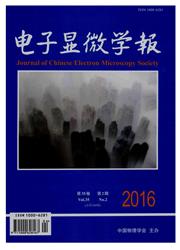

 中文摘要:
中文摘要:
脂筏(lipid rafts)是细胞质膜上富含固醇类和鞘脂类的微结构域,其大小为10~ 200 nm,是一种高度动态的结构.脂筏假说认为,质膜上一些小而动态的纳米级异质性结构可以通过脂类-脂类、蛋白-脂类和蛋白-蛋白之间的相互作用形成大的反应平台,进而可以介导细胞信号的转导过程.研究表明脂筏具有多种重要的生物学功能,其中包括参与信号转导、跨膜转运、胞吞和胞吐平衡调节、细胞骨架组织以及病原菌入侵等.目前对脂筏的研究还只是近几年才得到快速发展的一个领域,但已经受到越来越多的重视,并且取得初步的研究进展.本文主要介绍了脂筏的特性和生物学功能,尤其对脂筏在植物细胞中的研究进展进行了总结,为今后系统开展脂筏的研究提供理论参考.
 英文摘要:
英文摘要:
Lipid rafts are nano-scale domains enriched in sterols as well as sphingolipids. They are small (10 -200 nm) and highly dynamic. Therefore, the dynamic nanoscale heterogeneity can be stabilized to coalesce into larger raft domains by specific lipid-lipid, protein-lipid, and protein-protein interactions. A lot of evidence show that they play important roles in signal transduction, regulation of endocytosis and exocytosis, cytoskeleton organization as well as in pathogen entry. More and more attentions in the lipid raft study within the scientific community are convincingly testified by the steadily increasing publications. This review mainly focuses on the characteristics and the proposed biological roles of lipid rafts, with special emphasis on the research progress in plant cells, which will provide valuable information for further study on lipid rafts in plants.
 同期刊论文项目
同期刊论文项目
 同项目期刊论文
同项目期刊论文
 期刊信息
期刊信息
